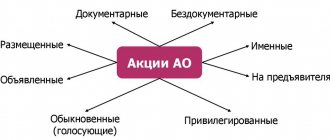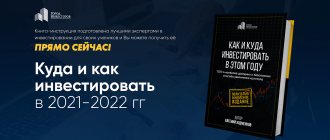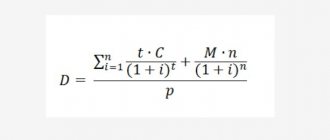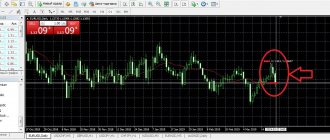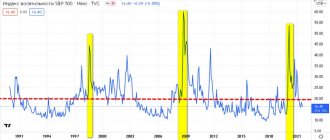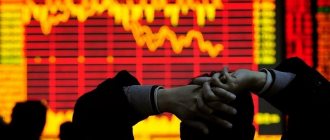Dividends are a good way to make money on shares without selling them; through these payments, the investor receives a stable income distributed over time. A dividend investment strategy
is a good replacement for a bank deposit, allowing you not only to protect capital from inflation, but also to ensure its growth.
At the same time, within the framework of the overall dividend strategy, several subtypes with different levels of risk and potential income can be distinguished. From this article you will learn:
- How is investor income formed?
- Dividend Strategies
- Is it possible to live on dividends?
- Collection of portfolio, payment of taxes
- Strengths and weaknesses of the dividend investment strategy
- Conclusion
Dividend investment strategy - how is the investor’s income formed?
Growth portfolios focus on businesses whose shares are likely to show the greatest growth in the future, hence the name. If remuneration is paid to shareholders, it is done irregularly, and the payments are small - this is more of a nice bonus than the main goal.
In dividend strategies (portfolios), the goal is the opposite, and income consists of 2 components:
- Payments to shareholders . Ideally, they should not be interrupted and should grow steadily (this implies an increase in payments in foreign currency).
- Growth in stock prices . Large companies that consistently pay dividends do not grow as much as rapidly growing businesses, but they most often grow over time.
A good example of the performance of shares of this type is the behavior of Johnson & Johnson shares over the distance from the beginning of 2010 to the end of 2022. During this period:
- Johnson & Johnson paid dividends of $28.82 per share.
- At the same time, the value of the shares themselves increased by 124% . If at the beginning of 2010 1 share with the ticker JNJ was valued at $65.00, then at the end of 2022 its value increased to $145.40. That is, each stock in the portfolio brought in another $80.40.
Due to the strong growth of quotes and steadily increasing payments, the return on investing in these shares would be 11.89% per annum without taking into account inflation. This number is based on fully reinvesting dividends into JNJ stock.
This example is almost perfect. Not all companies paying dividends show such stable growth, and quotes may remain in a range or decline. This is not the best scenario, payments correct the situation somewhat, but overall the profitability may be low.
AT&T is a case in point. The company is quite large, remuneration to shareholders is paid regularly, but this does not correct the problem with the growth of quotes. As a result, with full reinvestment of payments at a distance from 2010 to November 2022, the annual return is 5.06%. If we take into account inflation, it drops to 2.89%. At the same time, payments to shareholders were growing all the time.
This is why, when investing in dividend stocks, people always talk about assembling a portfolio that includes shares of several companies. It includes dozens of securities, and as a result, high income on some compensates for poor results on others.
The strategy for purchasing dividend stocks comes down to selecting and purchasing the appropriate securities; dividends will be accrued automatically. The variability of strategies is achieved through different methods of stock selection - this directly affects income and risks.
How to get “passive income” without dividends
If an investor wants to receive regular payments, he does not have to own dividend stocks. He can independently generate “dividend payments” by simply selling part of the assets that have risen in price.
In the table below, we compare two methods of generating income: Portfolio A generates income through dividend payments, and Portfolio B generates income through the sale of shares.
Comparison of methods for generating investment income using dividends (portfolio A) and selling part of the portfolio (portfolio B)
Source: Dimensional
An investor in Portfolio A (with dividend payments) ends up owning the same number of shares as before the dividend payment, but we assume that those shares have declined in value. Portfolio B investor owns fewer shares, but their value has not decreased as a result of the dividend payment. Both approaches lead to the same result—both investors end up with $100 in cash and $1,900 in stock, without considering potential trading costs or tax implications.
Dividend Strategies
Dividend strategy is a method for selecting shares and rules for working with a portfolio (dividends will be reinvested or partially/fully withdrawn). Some investors prefer to invest only in dividend aristocrats, while others have less stringent requirements for stocks.
Investing in Dividend Aristocrats and Kings
Aristocrats and kings are a specific category of business, characterized by stable long-term dividend payments, and the amount of payments is constantly growing. Both terms originated in the United States, where the first companies appeared that consistently increased shareholder compensation for decades.
Kings are businesses that have been increasing their dividends for at least the last 50 years. All kings are representatives of the American market.
To enter the category of aristocrats, the set of requirements is different:
- It is necessary to increase payments over the past 25+ years.
- Average daily trading turnover is from $5 billion.
- The company must be listed in the S&P 500.
- Capitalization from $3 billion.
The composition of aristocrats is not fixed; new companies are periodically added. If a business takes a break in paying dividends or reduces them, then it automatically falls out of this group, the same goes for kings.
The strategy on aristocratic dividend stocks is convenient because there are few companies and you don’t have to spend a lot of time on analysis. At the time of writing, there are only 65 companies in the United States that meet these criteria.
As for the effectiveness of this direction, over a long-term period the profitability is practically not inferior to conventional investment portfolios. Over the period from 2005 to the end of 2022, the index corresponding to the aristocrats slightly outperformed the regular S&P 500 in terms of return.
Focus on companies with the best history of dividend payments
There is a category of companies in the American market that fall into neither the category of kings nor aristocrats, but have a rich history of dividend payments. They do not fall into the listed categories for various reasons:
- During certain periods of history, payments may have decreased . Even 1 reduction is enough to lose the status of an aristocrat or king.
- Requirements for capitalization and liquidity of shares may not be met.
- The company may not be included in the S&P 500.
If you focus only on the S&P 500 Dividend Aristocrats basket, then 20-30 good dividend companies will fall out of the investor’s field of vision. You can verify this by comparing the list of securities with a rich history of payments and the list of aristocrats.
On dripinvesting org there is a so-called radar, where you can download for free a list of the best securities for dividend investment strategies (the so-called champions) on the American market.
There are just under 130 securities on the list, all of which pay out rewards for at least 25 years. This list is nearly double the size of the S&P 500 Dividend Aristocrats basket. If the priority is stability of payments and formal membership in the category of aristocrats/kings is not particularly important, then you should focus on this list.
Russian market
The Russian market is very young compared to the American one. If we apply the same criteria as for American stocks, then none of the Russian securities will meet them.
To understand how sad the situation is with the stability of dividend payments, you can study the composition of the Dividend Aristocrats Russia Index. To qualify, a company must:
- Get listed on the Moscow Exchange.
- The annual dividend must grow for at least 5 consecutive years . It is allowed for the payment to remain unchanged for 2 consecutive years.
I also recommend reading:
Mortgage fund - what is it? Scheme of work. How to invest in a mortgage fund?
If we compare the United States and Russia in the field of mortgage lending, then our country is in the position of a beginner. Such a phenomenon as [...]
There are no capitalization or liquidity requirements. But even with such loyal requirements, very few securities are included in the index:
- In 2022, 5 companies met the criteria.
- In 2022 – 6.
- In 2022, the list was reduced to 3 due to turmoil in the oil and gas sector.
NOVATEK's securities claimed to be a real aristocrat, but in 2021 it was not included in the Dividend Aristocrats Russia Index basket. The situation is unlikely to change radically in the coming years; decades will have to pass before companies with the same dividend history as Coca-Cola or Johnson & Johnson appear on the Russian market.
Due to the youth of the market, it is impossible to predict future dividends. By requiring payments over only 5 years, almost any company can become an aristocrat “for 1 day.” In terms of dividend growth, only Lukoil and NOVATEK stand out from the rest.
As for candidates for inclusion in the investment portfolio, the list may look like this:
- Territorial Generating Company No. 1 (TGK-1).
- FGC UES.
- Lukoil.
- Pole.
- OGK-2.
- Sberbank.
- Tattelecom.
- ChTPZ.
- Akron.
- Rosseti. From 2022, the policy regarding payments to shareholders has changed. Now the company will allocate 50% of earnings for this, provided that profit is recorded according to RAS.
When selecting Russian companies for your portfolio, we recommend taking into account the indicator of the so-called Dividend Stability Index (DSI) . This indicator is calculated on dohod.ru and allows you to assess the reliability of the business in terms of shareholder remuneration.
Possible DSI values:
- 1,0 – ideal option, dividends are paid for 7 years in a row, and are increased annually.
- DSI > 0.6 – payments have been made for at least 6 of the last 7 years, they either remain at the same level or are growing.
- 0.4 < DSI < 0.6 – shareholders have been rewarded for 4 years in the last 7 years. The likelihood of further payments is reduced by the fact that the company reduced or did not increase dividends last year/the year before.
- DSI < 0.4 – remuneration to shareholders is unstable.
The index allows you to quickly check any Russian business. For example, for Lukoil the index is 1.0, this is an ideal option; LKOH shares are suitable for an investment portfolio.
In the case of Polyus the situation is different. Remuneration to shareholders is paid, but the index is 0.5. Taking into account the dividend policy and a favorable forecast for the next year, shares can still be included in the portfolio.
In general, a dividend strategy for investing in Russian stocks should give preference to stable securities. It is advisable to limit the composition of the portfolio to securities with a DSI index value of at least 0.4. This is not the only criterion; one must take into account the forecast for financial indicators and possible adjustments to the dividend policy.
Companies with abnormally high dividends appear periodically. For example, in 2022, Lenzolot’s securities paid 15,219.5 rubles, despite the fact that the share price before this news was 18,890 rubles. This caused a sharp rise in quotes and then an equally sharp collapse after the cutoff. The securities fell below the level at which they were trading before the news of large dividends.
There is no point in chasing such payments. To know in advance about such a decision, you need to have insider information; ordinary investors do not have access to it. In such situations, immediately after the news is released, the price of shares rises sharply and there is no guarantee that you will have time to buy the shares on time. It is better to focus on standard dividend investment portfolios with predictable returns.
As for the Russian market, it is not worth concentrating only on it. There are too few companies, they are unstable and it will not be possible to assemble an adequate portfolio from Russian securities alone.
European market
The European market occupies an intermediate position between the American and Russian ones. On the one hand, there are not as many aristocrats as in the USA, on the other hand, everything is not as sad as in the case of the Russian market.
Europe has its own aristocrats, but the requirements for them are not as stringent compared to the US market. It is necessary that payments to shareholders increase for at least 10 consecutive years. In general, there are many companies in Europe that have been increasing their dividends over the past 10-15 years.
As in the case of the American market, there is an index that includes all European aristocrats. In the S&P Europe 350 Dividend Aristocrats basket, you can use them to navigate the dividend securities of the European market. The growth rate of the index is inferior to the American S&P 500.
I also recommend reading:
China A50 Index - an overview of the Chinese "economy indicator". How to invest?
This is one of the main barometers of the Chinese stock market. The China A50 Index is also known as the FTSE–Xinhua China A50 Index […]
Examples of European aristocrats for dividend strategies:
- Associated British Foods . The British food company has been increasing payments for more than 10 years. They took a break in 2022, but in 2022 shareholder remuneration resumed.
- Alcon . Spun off from Novartis, specializes in eye care, surgery, and vision care products.
- BAE Systems . British company operating in the defense sector.
- British American Tobacco . Another representative of the UK, the tobacco giant is a global company.
- Bunzl . Produces cleaning products and other consumables for the needs of medicine and the food industry.
- Coloplast . It operates in the medical market, specializing in the production of equipment for doctors working with stomas and urology.
- Diageo. The company produces alcoholic beverages.
- Enagas . Specializes in the transportation of natural gas.
- EssilorLuxottica . The glasses manufacturer also sells glasses through a network of its own stores.
- Fresenius Medical Care. Owns a network of dialysis clinics, this is the main activity.
The list goes on. There are at least 40-50 companies on the European market that deserve inclusion in the dividend portfolio.
As for profitability, if we create a mini-portfolio of several reliable companies, then over a 10-year period we will get a result of 9.50% without taking into account inflation. If we take into account inflation, the yield drops to approximately 7.50% per annum.
As for the general potential of Europe's dividend aristocrats, it is clearly shown by the graph of the corresponding index in comparison with the S&P Europe 350. The “aristocratic” index outperforms its competitor.
Should you include REITs in your dividend portfolio?
A dividend strategy for investing in real estate investment trusts (REITs) is a good choice. The key feature of this type of company is that they are required to allocate at least 90% of net profit to payments to shareholders. These securities are ideal for cases where price growth is not particularly important, but you want to get solid dividends.
Over a 23-year period, the top 5 REITs delivered an annual growth rate of 16.19% excluding inflation. This result outperforms the S&P 500.
The only disadvantage of REITs is the high tax on dividends. Even if an investor from the Russian Federation uses Form W-8BEN, he will have to pay a tax of 30% on dividends. In this case, the agreement on the absence of double taxation between countries does not work.
Why Russian investors love dividends
The dividend investment strategy has both supporters and opponents. Both have their own arguments for their opinions. It is clear to say that following a dividend investment strategy is good, or, conversely, bad, difficult.
But the fact remains: Russian investors have a special love for companies that regularly pay dividends to shareholders. Why? There are several reasons for this.
- The first and most obvious is the so-called “investment patriotism”. This means that the lion’s share of our compatriots invest money only in Russian assets, and, as you know, domestic companies do not skimp on payments compared to foreign ones.
- Another reason lies in psychology: the investor is simply pleased that money appears in his account from somewhere, which he can dispose of at his own discretion, spend or reinvest.
- Finally, banal ignorance of the properties of dividends, their source, that is, lack of knowledge about the operation of the financial market can also be a reason.
In order not to accept one of the opposing sides, opponents and supporters of the dividend strategy, it is worth objectively assessing the pros and cons that are characteristic of it.
Is it possible to live on dividends?
The answer depends entirely on the starting capital. Calculating exact future income is complicated by the fact that it is impossible to predict the amount of payments; it depends on the financial performance of the business and management decisions. But you can roughly estimate the starting capital.
If in the early 90s an investor had invested $40,000 in securities of reliable dividend companies, then after 30 years the dividends would have given about $12,500 per year. In the Russian Federation, you will have to pay a tax of 13% on this money, so that will leave about $10,800, or about $900 per month.
If you need to get such a result immediately after investing, you will have to invest more than $400,000. The problem is that in the 90s, $40,000 could buy a lot of securities of companies from the portfolio, and in 2022 there will be much fewer shares as their value has increased. If you include more profitable securities in your portfolio, you will need less capital, but it will still amount to millions of rubles.
The strategy of buying dividend companies can provide income sufficient for a comfortable life, but this will require solid starting capital . The optimal scenario is to reinvest dividends for the first 15-20 years, and after significant portfolio growth, begin to partially withdraw them.
I also recommend reading:
Earnings per share (EPS) - analysis and calculation of the ratio. How to use it in selecting papers?
Earnings per share (EPS) is one of the most popular multiples used to select securities. Based on this indicator, you can [...]
What you should pay attention to when choosing a strategy
The choice of dividend strategy is influenced by the following circumstances:
- Payout size: the higher they are, the more attractive the shares. However, along with the size of dividends, the market value is of great importance. They should increase in price or, at a minimum, not become cheaper.
- Volatility. The value of some stocks often changes sharply: they either grow quickly or suddenly become cheaper. If prices fall significantly, an investor's dividend income may be worthless.
- History of dividend payments. If a company has been paying dividends uninterruptedly for many years, there is a high probability that this issuer will not disappoint investors in the future.
- The likelihood of dividend increases or decreases in the future.
- Stability of the company's financial performance. A strong financial position gives the investor reason to hope for stable dividend payments.
- Market value growth potential. An increase in quotations of undervalued securities can become a source of additional income. If the shares are overvalued, their reduction in price can bring losses even despite high dividends.
Collecting a portfolio for a dividend strategy, paying taxes
Regardless of what papers are being worked with, the main stages look like this:
- Selection of suitable companies.
- Search for a broker that provides access to the relevant exchanges.
- Portfolio collection – relevant shares are purchased in a predetermined proportion.
- Further, dividends will automatically be credited to the investor’s account. In the case of foreign securities, the terms can stretch up to several months. Money comes from Russian companies within 18 working days after the registry is closed.
- Money is either withdrawn or reinvested.
The solution to the tax issue depends on the broker through whom the work is carried out. For a client from the Russian Federation, Russian brokers are tax agents and themselves pay the tax for the client. For American companies, the tax is paid locally and then in the Russian Federation the difference is paid up to 13%. But this scheme will only work if the investor signs Form W-8BEN. There is an agreement between the Russian Federation and the United States on the absence of double taxation, so in the United States a tax of 10% will be withheld, and in the Russian Federation you will have to pay an additional 3%.
Exception for REITs - for them in the USA, 30% tax will be withheld from dividends. In Russia you will not have to pay tax.
American companies with stable dividends
The American list of dividend aristocrats is very long. However, their market is much larger, and the history of the exchange itself goes back more than 100 years.
- 3M Company;
- A. O. Smith Corporation;
- Abbott Laboratories;
- AbbVie, Inc.;
- ABM Industries Incorporated;
- Aflac Incorporated;
- Air Products and Chemicals, Inc.;
- Albemarle Corporation;
- Amcor PLC;
- American States Water Company;
- Aptargroup, Inc.;
- Aqua America, Inc.;
- Archer-Daniels-Midland Company;
- AT&T Inc.;
- Atmos Energy Corporation;
- Automatic Data Processing, Inc.;
- Bank OZK;
- Becton, Dickinson and Company;
- Black Hills Corporation;
- Brady Corporation Class A;
- Brown & Brown, Inc.;
- Brown-Forman Corporation Class B;
- CH Robinson Worldwide, Inc.;
- California Water Service Group;
- Carlisle Companies Incorporated;
- Caterpillar Inc.;
- CDK Global Inc;
- Chevron Corporation;
- Chubb Limited;
- Church & Dwight Co., Inc.;
- Cincinnati Financial Corporation;
- Cintas Corporation;
- Clorox Company;
- Coca-Cola Company;
- Colgate-Palmolive Company;
- Commerce Bancshares, Inc.;
- Community Bank System, Inc.;
- Consolidated Edison, Inc.;
- Cullen/Frost Bankers, Inc.;
- Donaldson Company, Inc.;
- Dover Corporation;
- Eaton Vance Corp.;
- Ecolab Inc.;
- Emerson Electric Co.;
- Essex Property Trust, Inc.;
- Expeditors International of Washington, Inc.;
- ExxonMobil Corporation;
- Fastenal Company;
- Federal Realty Investment Trust;
- Franklin Resources, Inc.;
- General Dynamics Corporation;
- Genuine Parts Company;
- H. B. Fuller Company;
- Hormel Foods Corporation;
- Illinois Tool Works Inc.;
- International Business Machines Corporation;
- J. M. Smucker Company;
- John Wiley & Sons, Inc. Class A;
- Johnson & Johnson;
- Kimberly-Clark Corporation;
- Kontoor Brands, Inc.;
- Lancaster Colony Corporation;
- Leggett & Platt, Incorporated;
- Lincoln Electric Holdings, Inc.;
- Linde plc;
- Lowe's Companies, Inc.;
- McCormick & Company, Incorporated;
- McDonald's Corporation;
- MDU Resources Group Inc;
- Medtronic Plc;
- Meredith Corporation;
- MSA Safety, Inc.;
- National Fuel Gas Company;
- National Retail Properties, Inc.;
- New Jersey Resources Corporation;
- NextEra Energy, Inc.;
- Nordson Corporation;
- Nucor Corporation;
- nVent Electric plc;
- Old Republic International Corporation;
- Pentair plc;
- People's United Financial, Inc.;
- PepsiCo, Inc.;
- Polaris Inc.;
- PPG Industries, Inc.;
- Procter & Gamble Company;
- Realty Income Corporation;
- RenaissanceRe Holdings Ltd.;
- RLI Corp.;
- Roper Technologies, Inc.;
- Ross Stores, Inc.;
- RPM International Inc.;
- S&P Global, Inc.;
- SEI Investments Company;
- Sherwin-Williams Company;
- Sonoco Products Company;
- Stanley Black & Decker, Inc.;
- State Street Institutional Liquid Reserves Fund;
- Sysco Corporation;
- T. Rowe Price Group;
- Tanger Factory Outlet Centers, Inc.;
- Target Corporation;
- Telephone and Data Systems, Inc.;
- TJX Companies Inc;
- UGI Corporation;
- United Bankshares, Inc.;
- United Technologies Corporation;
- VF Corporation;
- W. W. Grainger, Inc;
- Walgreens Boots Alliance Inc;
- Walmart Inc.;
- West Pharmaceutical Services, Inc.;
In addition to direct purchases of shares, among financial instruments in the United States there are dividend ETF funds:
- SDY - SPDR S&P Dividend ETF (quarterly payments);
- NOBL - ProShares S&P 500 Dividend Aristocrats (quarterly payments);
- HDV - iShares Core High Dividend ETF (quarterly payments);
- VIG - Vanguard Dividend Appreciation ETF (quarterly payments);
- PFF - iShares US Preferred Stock (PFF) (monthly payments);
In January 2022, an ETF fund for Russian dividend shares DIVD appeared on the Russian market. It represents an active managed mutual fund that copies the IRDIVTR index (INCOME Index of Dividend Stocks of the Russian Federation).
Strengths and weaknesses of the dividend investment strategy
The advantages of the dividend strategy include:
- Stable income distributed over time.
- Predictability of payments.
- Gradual increase in profitability . Due to the constant growth of dividends, profitability will increase. If, for example, in 2010 you bought shares at $100 and the company paid $4 per share, then the yield was 4%. But if the securities remained in the portfolio and in 2022 the payments increased to $8, and the stock price rose to $300, then your individual return will be 8%.
- There are reliable companies that have been paying investors for decades . This makes the choice easier.
- There are ETFs that make investing easier . You don’t need to build a portfolio, just buy shares of the corresponding exchange-traded funds.
The matter was not without its drawbacks; the disadvantages of the dividend strategy include:
- The tax, in the case of REITs, is 30%.
- The fact that dividend stock quotes are growing more slowly.
- Possibility of interrupting payments.
- Low profitability of highly reliable companies.
Dividend portfolios are a compromise between safety and growth.
Let's summarize the main thoughts:
- Dividends are a way of distributing profits that are not invested in the company's growth.
- When dividends are paid, the value of the shares decreases by the amount of the dividends. The presence of dividend payments does not allow you to get more profit from the shares of the same company.
- If an investor wants to receive regular payments, he does not have to own dividend stocks. He can independently generate regular income from investing by selling part of his assets.
- By compiling a portfolio of only dividend stocks, an investor exposes himself to a number of risks due to poor diversification, unreasonable expectations of stable income, and the inability to plan for such income.
- When planning an investment strategy, investors should focus on the total return of a stock investment rather than the dividend yield.
Investment or speculation
Several strategies are used to earn money from dividends.
Many people are carried away by speculation. Buy shares a month or a couple of weeks before the dividend cutoff. Wait for the quotes to rise.
Next, several options are possible.
Reset securities just before the dividend cutoff. Making money on growth.
Or, after the dividend gap, wait for the quotes to recover to the pre-dividend level and close the position. Having received dividends and some kind of growth.
The third popular strategy is aimed at buying shares that have fallen in price after a gap. Hoping for its closure soon.
Is it profitable? Yes and no.
The most important detail of the above strategies is all speculation. Constantly monitoring news, quotes and other nuances. With a huge loss of time.
The main goal is short-term profit making. Here and now. At intervals of several weeks.
The most important question. What's next? You've pulled off a speculation. They dumped the shares. Perhaps they earned something. And in a year. Buy again (at higher prices). Earning your 10-15% profit. And so in circles all your life?
Investments, unlike speculation, allow you to receive constant profits in the form of dividends. Year after year. Without your participation.
Don't guess the future
When making specific trading and investment decisions, you need to focus on facts. Nobody knows what will happen to the dividend policy of a particular company in 2-3 years. The same Lukoil and MTS may become outsiders from leaders. If these issuers cut their dividends several times, they will no longer be so interesting.
The opposite situation is also possible. A company with a modest dividend history will begin to generously reward its own shareholders.
For example, consider the situation with dividend payments of PJSC Aeroflot. So, in 2002 they amounted to 6 kopecks per share. There were periods during which the issuer did not pay dividends at all. But for 2022, the payment amounted to 17.5 rubles per share. Thus, over a decade and a half, dividends have increased almost 300 times.
What does this mean? Avoid stereotypes and dogmas. Analyze the facts and make a decision based on the current state of affairs.
Why does the stock price decline after the cutoff?
After the general meeting of shareholders (sometimes earlier) approves the amount of dividends and the closing date of the register, most shares on the stock exchange experience a dividend gap. This is a reduction in quotes by approximately the amount of expected payments.
This situation equalizes those who bought shares before the cutoff with the expectation of dividends, and those who buy later. The latter will not receive money from the issuer, so they can count on a lower price for the paper. This does not mean that the reduced quote will hold and please investors indefinitely. There comes a moment when the gap closes, i.e. the price returns to its previous level.
The period of time before closing is different for all companies. The duration depends on many factors: the situation in the global and national economies, the industry, the company itself, etc. For some issuers, the gap closes in a few days, for others in several months, and for others it may not exist at all.
The Otkritie broker has a dividend calendar, which, in addition to the cut-off dates and the last day for purchasing shares, contains information about the timing of closing the gap and the percentage of decline in quotes. For example, Rosneft, Phosagro, Novatek and Mechel had no drawdown at all. VTB closed the gap in 14 days, AFK Sistema in 2 months.
The best Russian dividend stories
Let’s immediately make a reservation that we will now only talk about blue chips traded on the domestic stock market. Among the second and third tier companies you can find offers with higher dividend yields.
Let us again remember the principle of diversification. When forming a dividend portfolio, buy both blue chips and shares of second, third and even fourth tier companies. However, let's return to our favorites.
Lukoil
This issuer is distinguished by the most stable growth in dividends on the Russian stock exchange. In annual terms, the average increase in such payments is 22.4%. It is interesting that the issuer in question increased dividends even in years when there was a serious drawdown in net profit.
What is interesting for investors in such a situation? The presence of a steadily growing dividend trend in Lukoil shares allows us to build a profit forecast for the years ahead.
The issuer traditionally pays dividends twice a year. These are interim winter payments and final summer payments.
Lukoil's dividends are only slightly above the average for oil and gas companies. And the issuer in question stands out from the crowd precisely because of its stable history of growth in payments.
MTS
Traditionally, this issuer offers investors an attractive dividend yield. Moreover, the indicator under consideration can be clearly seen from a historical perspective.
The company has been steadily increasing its payout per share since 2012. The average annual rate of this growth is 10%. Competitors from the telecommunications industry are left far behind.
It should be noted that MTS shares in the long term move in a rather narrow price range. In other words, stocks neither rise nor fall.
What does this mean for investors?
You won't be able to make money from stock growth. At the same time, losses of invested capital are practically excluded. Thus, the paper is ideal for investors who focus specifically on a dividend strategy.
Portfolio rebalancing
One of the advantages of a long-term dividend strategy is that it does not require a significant investment of time from the investor. This is an obvious plus. Yes, you need to spend some time choosing stocks for investment. But in the future, the investor should only occasionally analyze the structure of the assembled portfolio.
Nevertheless, it is necessary to do this. If some securities have risen in price significantly, then their share in the portfolio will increase significantly, which is not welcomed by the rules of risk management. In such a situation, the optimal solution seems to be selling part of these shares.
By acting in this way, the investor, firstly, will lock in a good profit. Secondly, it will bring the state of the dividend portfolio to the initially selected proportions.
By the way, the profit received can be put back into business by purchasing new shares for which high dividends are expected.
How much money and time do you need?
You can start with any amount. But the result will depend on the size of the deposits and the time they last. As a result, the DGI strategy allows you to receive any income.
For example, I set myself a goal - to reach a salary of $1000 a month in dividends.
If we want to immediately get such income from scratch, then we need to make a one-time investment of $400,000 ($400,000 * 0.03 / 12 = $1,000). The amount is huge.
The market allows you to move in another way. You can invest less and get the same result. This does not require initial capital. We will invest a little at a time and use market features such as compound interest and company development to achieve more with less.
The stock market is like a jar of yeast.
When you put something there, what is already there grows, so you need to report less:
- Invest $400,000 and the pot will fill immediately. You will receive $1,000 per month.
- And if you add it in parts every month, then you will need less money, because part of the work will be done by the “yeast” of the stock market.
Here's how the amount of replenishment and the deadline for achieving the goal changes under different options:
Use the dividend calculator
and calculate your option when you can become a dividend rentier. Open dividend calculator.
How to buy shares profitably?
Let's imagine a situation where a stock market participant analyzed issuers and selected securities to form a portfolio. The newcomer will immediately buy the investment assets of interest at the current exchange price. An experienced participant will not rush, but will wait for favorable conditions and a favorable price.
Remember this little trick. Obviously, the cheaper the shares are purchased, the higher the dividend yield. Let's back up this statement with calculations.
Let's assume that an investor decides to purchase shares of PJSC Sever. The approved amount of dividends for each security of the issuer is 100 rubles. At the same time, the current share price is 1000 rubles. If an investor buys this asset under such conditions, then the dividend yield of the instrument will be 10%.
But what happens if you can buy shares cheaper? Let's say for 800 rubles. Dividends will remain the same. But the profitability of payments will increase and will be not 10, but 12.5%.
However, questions arise: how to achieve this in practice? How to determine the moment to enter the market and purchase securities?
We offer a simple but effective solution. As practice shows, sharp drops in quotes occur periodically in the stock market. As a rule, such a drop in quotes is caused by the release of some unexpected news. In the short term, panic seizes the market and stocks become much cheaper over the course of one or several trading sessions.
Then investors and traders calm down. The drawdown is redeemed. For securities that are in a long-term bullish trend, this process occurs at a fairly rapid pace.
For example, consider the results of the trading session on April 9, 2018 for Lukoil shares. Quotes sank from the level of 3920.5 to 3532.5 points. Then, over the course of two trading sessions, the specified drawdown was bought back and the securities continued to rise in price.
In 2022, this was the ideal time to purchase Lukoil shares. Similar drawdowns in quotes occur for every security. The most difficult thing in implementing such a strategy is to be patient and wait for the right moment to enter the market.


